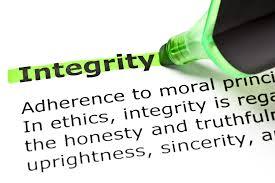 Most leaders today understand the importance of having clearly articulated values that guide the decisions and behaviors of team members.
Most leaders today understand the importance of having clearly articulated values that guide the decisions and behaviors of team members.
But it seems that many organizations treat "core values" as just another couple of buzz words.
Leaders get excited about creating core values that they hope will inspire both team members and customers. The values are printed on a document that hangs prominently in the CEO's office, or might even be displayed on the company website.
Unfortunately, many organizations never move beyond this point. As a result, it's difficult to find team members, or even leaders, who consistently live the core values or use them to guide decisions.
I recently had the opportunity to speak with S. Chris Edmonds, author of the great new book entitled The Culture Engine.
Chris shared several powerful tools for creating a workplace culture where values are inspiring, and result in a culture that people enjoy being a part of and produces great business outcomes because the values are actually lived on a consistent basis.
The Organizational Constitution
The central component of Chris' work is what he calls an organizational constitution. This document defines the culture at an organization.
The first key element of the organizational constitution is a clearly defined purpose that goes beyond producing a product or making money. Although it may take some time to uncover a deeper purpose that is inspiring for everyone on the team, it is well worth the effort. An inspiring purpose can significantly improve engagement levels of team members.
Limiting Core Values to the True "Core"
Another key element of the organizational constitution is the list of the most important values in the organization. This should not be a list of 15 or 20 values. It should truly be the absolute most important values that are non-negotiable. Chris recommends no more than five.
By really getting clear on the absolute most important values and limiting them in number, it's much easier for people to remember them and apply them.
For organizations that have already been in existence for a while, Chris suggests that you make an effort to include team members in the process of defining the core values, leaning heavily on your top performers. Thus, there will be more buy-in from team members.
Clearly Defining Values with Associated Behaviors
If you ask five people on your team what "integrity" means to them, you will probably get at least several different answers.
If you want to ensure that people are clear on what each value means, each value has to be defined in terms of the two or three behaviors that are most associated with that value. Chris recommends defining values with "I" statements.
For instance, the value of integrity might be defined partly with the behavior, "I do what I say I am going to do."
In addition to making it easier to understand what is meant with each value, defining them with behaviors also makes them easier to measure.
Measure Values with the Same Effort We Measure Performance
Nearly every organization does a great job of measuring things like sales and quality and expenses. However, many organizations could do a much better job of measuring the alignment with the stated core values.
We should place just as much importance on values alignment as we do on business outcomes because values alignment is what creates the strong culture that drives long-term business outcomes.
The first people to be measured should be the leaders. Leaders should be rated by peers and subordinates on the degree to which they live the values of the organization.
When values are lived from the top down, the results include higher levels of trust, engagement, innovation, and ultimately business outcomes.
Chris reports that organizations that follow through with designing and abiding by well-crafted organizational constitutions often see dramatic improvements in engagement levels, customer service, and profits within 12-24 months.
To see the full interview with S. Chris Edmonds, click here.
__________
Matt Tenney is a social entrepreneur, an international keynote speaker, and the author of Serve to Be Great: Leadership Lessons from a Prison, a Monastery, and a Boardroom.
